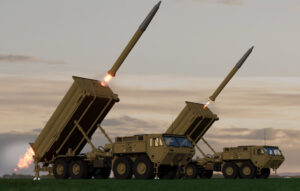The struggle of U.S public schools to gain back learning losses students suffered from the covid pandemic is especially important for those communities near military installations due to the economic benefits put at risk.
That’s because the U.S. military takes into consideration the quality of local public schools as it decides whether to maintain military commands and offices where they are or move them elsewhere. And the economic impact of any single military installation on the local community can be enormous.
In Texas, for example, in 2021 alone the 14 military bases located there generated more than $114 billion in economic activity and added $67 billion to the state’s gross domestic product. According to a study last fall by the state comptroller, the bases also generated $42 billion in annual disposable personal income and supported more than 622,000 Texas jobs.
Not only the biggest or most populous states benefit. In Virginia, for example, the economic benefit from Fort Lee alone, in the southern part of the state, is $2.4 billion in annual economic output, or 13.68 percent of the region’s GDP, according to government figures. The economic benefit of Marine Corps Base Quantico in northern Virginia is $3.2 billion in direct impact and $5.9 billion in combined direct and indirect impact. In Mississippi, the annual economic benefit of Keesler Air Force Base in Biloxi and other Gulf Coast facilities in the state is $2 billion.
Military leaders have stressed that K-12 school performance is a big deal because it impacts recruitment into the ranks and retention of current service members with school-age children, most of whom attend public schools. Recruitment and retention are always top of mind for military leaders, but they an even higher priority as the services struggle to fill quotas.
For 2022, the Army fell 25 percent short of its recruitment target and is emphasizing increasing the retention target of its existing force to help meet overall force level goals. With retention more important than ever for the Army, so is the quality of public schools.
A top quality of life issue for service members
The U.S. military leadership has fretted over school quality for several years. In 2019, the Air Force’s then-top officer, Gen. David Goldfein, the chief of staff, stressed the point to local leaders concerned about the viability of military facilities in their regions. “As I visit installations, the number one quality of life issue of airmen with children is access to good schools,” he told a gathering in Washington, DC.
Goldfein said that “as we make future basing decisions…we’re going to start at some of those quality-of-life issues because of retention. Airmen are not going to stay in the United States Air Force if I’m moving them between school systems that are all over the map” in terms of quality.
One year earlier, the leaders of the military services – the top civilians in the armed forces — warned the nation’s governors to pay attention to school quality. They said in a letter that “the quality of schools near bases” will be a key factor “when evaluating future basing or mission alternatives.”
School quality is so poor in some regions that service members opt not to bring their families, further undermining long-term retention. Lt. Gen. Anthony Cotton, then the commander of Air University and Staff College at Maxwell Air Force Base in Montgomery, Alabama, said that in 2017 some 56 percent of airmen arrived at the Air War College without their families, with school quality cited as the top reason for separation.
“The reality is, ‘If my kids aren’t happy, I’m not happy,’ ” Cotton said of the airmen mindset.
The message is crystal clear to local communities around the country with concentrations of military-connected students, especially as they work to overcome learning losses. They must ensure quality K-12 education or face a loss of economic benefits if the service moves commands and offices elsewhere.
A strategy for local communities
Montgomery readily understood the economic value of its relationship with the Air Force. Together, local leaders and the service formed an education task force to consider ways to improve options for the children of service members.
A task force is a good place to start for any community that seeks to protect and nurture its economic relationship with the military.
As leaders in education and experts in strengthening the relationship between installations and local communities, we offer an additional approach for communities to consider that helps improve the quality of schools while also reassuring military parents of a community’s commitment to education:
Department of Defense grants: Public schools around the country are making use of billions of federal dollars in covid recovery benefits to improve schools and student performance. But those public schools with military-connected students have an additional financial tool at their disposal.
The Department of Defense Education Activity (DoDEA), which manages government public schools at U.S. bases around the world that educate approximately 70,000 military-connected children, also provides grant funds to domestic public school districts that host service member children. And most military-connected children – some 1.1 million – attend public schools.
Just last October, DoDEA issued 45 grants worth $63 million to local education agencies. Since 2009, DoDEA has issued more than 600 grants totaling approximately $712 million in investments for public schools serving military-connected students. Local school districts with at least one school comprised of at least 10 percent military-connected kids are eligible to apply for a DoDEA grant.
DoDEA grants are focused on improving educational outcomes, narrowing achievement gaps and providing access to academic programs. The grants included awards to implement programs in literacy, world languages, science, technology, engineering and math and social-emotional supports for students.
In addition, K-12 schools with similar concentrations of military-connected children can also apply for Department of Defense STEM grants to bolster their Advance Placement class offerings.
Adoption of high standards: Military service members with children move every two to three years. So, they are keenly focused on whether school systems maintain high education standards and quality. One way to assure them about the community they are moving into is for the school system to adopt academic, skill development and overall school improvement systems that represent the minimum expectations of military families. These include STEM programming, foreign languages of critical importance, Advanced Placement courses, personalized education capabilities and applied learning/CTE programs. The grants in turn can be used to bolster these priorities.
Seal of approval: Communities can also signal to U.S. military families their commitment to education by adopting an accreditation program similar to that used by DoDEA schools, but instead focused on public schools that serve military families. The preferred organization to accomplish this is Cognia, a non-profit education leader that already provides quality assurance and continuous improvement for DoDEA schools worldwide, as well as for hundreds of military-connected public schools near 90 DoD installations in 23 states.
Service members are already familiar with DoDEA as providing quality K-12 education – DoDEA schools outperformed most school systems across the nation, despite the impact of the pandemic. A third-party endorsement from Cognia provides a seal of approval for military parents and can mitigate parental concerns about any given school system.
“The quality of K-12 education is an important criterion for retention of the military family,” DoDEA says about its grant program, adding that, “leveraging partnerships with school districts is paramount in influencing successful educational outcomes for military-connected students.”
More than ever, military readiness is overlapping with the performance of the local schools near a military base. For the sake of national security, and a local region’s economic viability, we must provide those schools with a formula for success.







